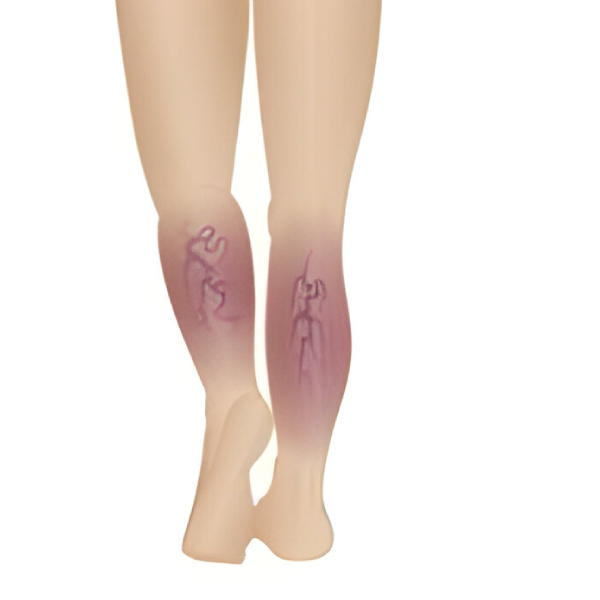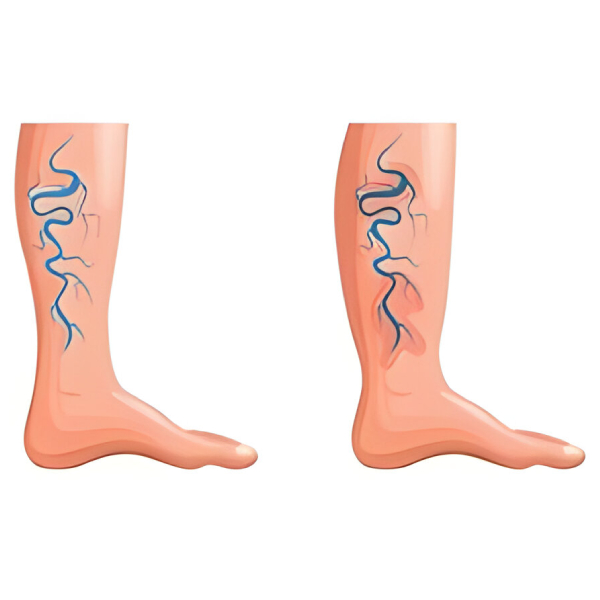R
e
l
e
v
i
u
m
Chronic Venous Insufficiency
Signs and Treatment Options
Varicose veins are a common issue affecting over 30 million individuals in the United States, often presenting more than just a cosmetic concern. While vein problems may initially be overlooked, they can progress and lead to significant health issues if left untreated. Here are seven warning signs of vein disease that can cause discomfort and have serious consequences:
1. Dull ache or feeling of heaviness in the legs.
2. Leg cramps.
3. Tingling and itching sensations.
4. Pain experienced while standing.
5. Leg swelling.
6. Changes in skin color and condition on legs and ankles.
7. Ulcers on the skin.


What is Chronic Venous Insufficiency?
Chronic venous insufficiency occurs when the valves in the veins malfunction, hindering the proper flow of blood towards the heart. These valves are essential for preventing blood from leaking backward in the veins.
What Causes Chronic Venous Insufficiency?
Various factors contribute to chronic venous insufficiency, including genetics, pregnancy, obesity, leg trauma, blood clots, smoking, high blood pressure, lack of exercise, and phlebitis (inflammation of a superficial vein).
Is Chronic Venous Insufficiency Dangerous?
If left untreated, chronic venous insufficiency can lead to pain, inflammation, swelling, and the development of leg ulcers.
How is Chronic Venous Insufficiency Diagnosed?
Diagnosis typically involves a thorough medical history and physical examination, along with a venous ultrasound to assess blood flow, valve function, and vein size.
What Are the Treatment Options for Chronic Venous Insufficiency?
Treatment options range from non-invasive measures such as compression stockings, antibiotics, leg elevation, and exercise to more invasive procedures like radiofrequency ablation, sclerotherapy, and phlebectomies.
Can Chronic Venous Insufficiency be Prevented?
Maintaining a healthy body weight, engaging in regular exercise, avoiding prolonged periods of standing or sitting, and abstaining from smoking can help prevent chronic venous insufficiency.
How Common are These Symptoms?
Symptoms such as leg swelling, pain, and cramping, including restless leg syndrome, are prevalent among individuals with venous insufficiency.
What Are the Common Causes of These Symptoms?
Varicose veins are a common cause of leg pain, swelling, and cramping. Sometimes, varicose veins may be hidden beneath the skin’s surface, leading patients to be unaware of their association with these symptoms.
How are the Causes Diagnosed?
A physical examination and venous ultrasound can help diagnose the underlying causes of symptoms associated with chronic venous insufficiency.
What Are the Treatment Options?
Treatment options include exercise, antibiotics, radiofrequency ablations, and sclerotherapy, depending on the severity and underlying cause of the condition.
Convenient Online Booking for a Seamless Experience
Schedule Your Next Appointment with Ease
Go To Top

